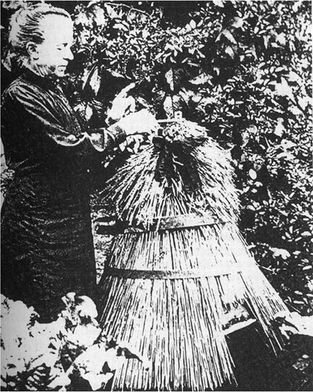Bee Myths
Bee Myths
explores the role bees play in human imagination, and the role myth-making plays in the accounts we tell ourselves of the world.
The ritual of ‘telling the bees’ harks back to the ancient idea that bees are actually messengers to the divine or to other realms, symbols of the soul with an ability to fly between worlds. In Bee Myths, the idea that perhaps we have forgotten to tell the bees something important which has led to their demise, is at play.
This new body of work is a collaboration between artist Amy Shelton and author John Burnside - part of their ongoing series of works exploring the links between pollinators and human wellbeing, re-evaluating our ancient relationship to and reliance upon pollinating insects and the environments that sustain them.
Bee Myths takes the form of a series of framed porcelain clay and beeswax artworks, accompanied by works on paper, limited edition prints and a sound recording.
John Burnside’s texts weave existing and new myths in a condensed, allusive narrative, somewhat like a fable or parable. Grouped seasonally, each of the texts contemplates what links us to bees. The delicately inscribed surfaces of Amy Shelton's clay pieces are peppered with a complex matrix of gestural marks, referencing the cuneiform tablets used by scribes in ancient civilisations to document, chart and record crucial current events. Each artwork is a poetic account of our mysterious and ancient connection to bees, extolling how stories and myths about bees are potent and essential conduits across cultures and time.
Shelton trained as a potter early in her career, and has used clay as a primary material in several series of work. Her use of the clay surface to imprint text, carry drawn and incised lines and embed fragments of other materials and pigments in works created from paper-thin clay ‘pages’ or clay panels or book forms is a reoccurring one.
The very earliest forms of writing ever made are inscribed on clay ‘cuneiform’ tablets created in ancient Mesopotamia (present day Iraq). There are an estimated half a million excavated clay tablets in museum collections across the world recording fragments of ancient languages. The cuneiform writing system was used to convey a version of Sumerian spoken language with an ingenious, complex matrix of incised marks pressed into damp clay with a stylus. Researchers deciphering clay tablets have revealed that a high proportion of the information encrypted in the clay surfaces is the documentation of accounting ledgers along with records charting important events and details of the cultural calendars of ancient civilisations alongside poems and fragments of commandments and law codes.
The research and development phase of the Bee Myths project was supported by an Arts Council England grant and a Wellcome Trust Arts Award. The fabrication phase was supported by an Arts Council England Emergency grant.
Back to Unbound.




